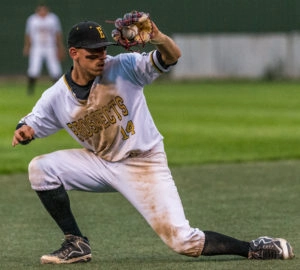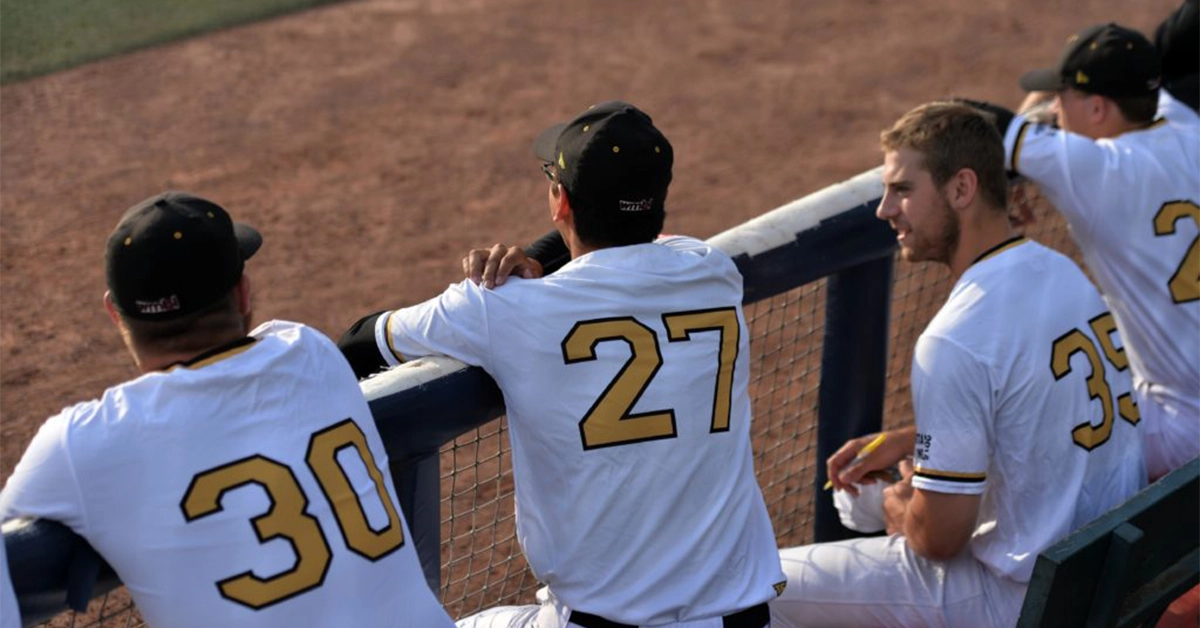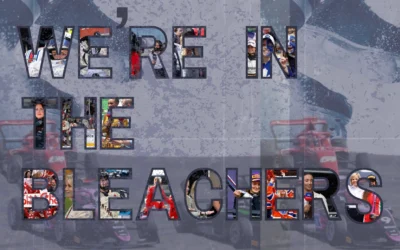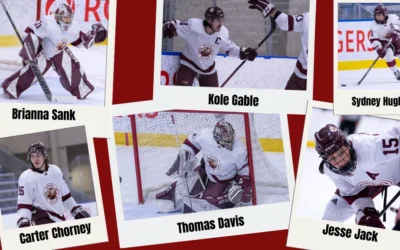Kyle Brodziak of the Edmonton Road Runners had the greatest wrist shot of all-time — or so my 12-year-old self would tell you. Caught in the midst of the NHL lockout during the ’04-’05 season, I was exposed to great athletes in person for the first time in my life. My jaw dropped and I tugged at my friends’ Road Runner hoodies every time Raffi Torres laid a big hit. Those hoodies were $20. The tickets to Rexall Place were free via a promotion with my minor hockey team.
And the arena was only half-full.
The Road Runners, stocked with Oilers skaters, were only in Edmonton for one season while a labour dispute between the NHL and its players prevented the pro puck stars from competing in the major league. Despite my 12-year-old eyes’ appraisal of the influx of NHL-calibre talent that the Road Runners boasted as the Oilers’ AHL affiliate at the time, the team wasn’t very good.
The Road Runners weren’t the only contemporary Edmonton sports team not named the Oilers or the Eskimos to struggle with a lack of overflowing fan support in the stands. No matter how great the players or how affordable the tickets, alternative sports have had to struggle to grow their audience in Edmonton.
Some have been somewhat successful, and others haven’t.
Through Ticketmaster, an Edmonton Eskimos ticket costs a fan anywhere between $20 and $90; on average, about 30,000 fans pour into Commonwealth Stadium each regular season home game. The stadium fits more than 60,000, but half that number is more than enough to show support for Edmonton’s CFL team.
Using the same methodology for the Edmonton Oilers, the cost can be anywhere between $65 and $400; most of these games, especially with the new arena, are already sold out or are likely to sell out.
Regardless of whether the teams win or lose, fans still show up in droves, producing greater attendance numbers than any other amateur or professional sports teams that call Edmonton home.
Despite massive amounts of success, most other sports in Edmonton cannot seem to gain a footing in the City of Champions.
Edmonton Prospects
Head down the hill from Rogers Place to Edmonton Ballpark (formerly Telus Field) and you’ll find the Edmonton Prospects — a Western Major Baseball League collegiate team that struggles to regularly fill the 8,800 seats in the stands. The park was built to host professional ball teams of the past, such as the Edmonton Capitals, and while the Prospects saw their average attendance triple from under 300 in 2012 to just over 1,000 in 2015, those numbers are skewed by the 6,000-person crowds their annual Canada Day game attracts.
Logan Wedgewood is a 22-year-old catcher who spent all four of his collegiate eligibility years with the Prospects, culminating in a western conference title this August.
He says the fan support for the less popular sports in Edmonton makes a difference in the team’s play. The Prospects’ larger Canada Day and playoff turnouts help fuel their drive to perform.
“The atmosphere there felt like a professional baseball stadium,” he says. “Most of all, you want to show off in front of all those people. You want to be the one that after the game the kids talk about at home or on the car ride home. Everybody wants to be that person.”
“We definitely get almost dependent on (the fans), at some point, to give you that energy boost. It definitely comes intrinsically from the fans, and after a while you kind of need it.”
Yet despite the value players like Wedgewood place on energy from the crowd — big or small — he would go as far as to say over half of the city likely doesn’t know the Prospects exist.

“We’re definitely on the bottom of the totem pole sports-wise in Edmonton,” he says, “because we are just a collegiate league and they are professional sports.”
The Prospects currently offer the highest calibre of competitive baseball available to watch in Edmonton. The Prospects won a Western Conference championship this year but, save for a modest attendance increase for their playoff run, hardly gained any fans because of it.
The lack of an increase in fanship is despite support from other local teams.
Local franchises often work together to promote one another during special events, like when Eskimos game attendees heard shout outs for the Prospects’ playoff run in August.
More often than not, these shout outs aren’t enough for lower-tier sports to attract fans in large droves.
FC Edmonton
Head northeast from Edmonton Ballpark, 10 minutes down the Capital LRT Line, and in the shadow of the mighty Commonwealth Stadium’s bleachers you’ll find Clarke Stadium. The pitch has been home to our city’s professional soccer team, FC Edmonton, since 2012.
Playing in the North American Soccer League (NASL), FC Edmonton posted middling results in the last five years of regular season play against seven other teams in 2011, against nine others in 2014, 10 in 2015, and 11 this year. FC Edmonton has had a successful season this year, sitting second in the standings at time of publication.
The team’s average attendance fluctuated from an at-capacity low of 1,500 in 2012, when they played their last season of home games at Foote Field, to a 2014 high of 3,400.
That high followed a May 2013 expansion to Clarke Stadium in which the team installed temporary bleachers on the east side of the pitch that increased the capacity to 5,000.
The team wants to see the number of seats permanently tripled to a mid-sized stadium capacity of 15,000, but they’re waiting on support from Edmonton’s city council and prospective fans to make that a reality.
Support for Edmonton’s NASL team has been hard to come by, but even professional teams at the highest level struggle with attendance in the city.
Edmonton Rush
Take the LRT from Stadium to Coliseum and you’ll arrive at Rexall Place, the Oilers’ old arena and the home where the Edmonton Rush, the city’s National Lacrosse League team, spent a decade before relocating out east due to consistent low attendance.
Some might call the 10-season run the Edmonton Rush had at Rexall an example of a team that received substantial support from the community. But even when the Oilers were busy missing the playoffs (again) with a 28th place finish two seasons ago, the Rush’s repeated post-season success couldn’t garner increasing support.
After four years of playoff pushes and finally winning its first championship in 2015, the Rush’s team owner, Bruce Urban, announced its relocation to Saskatoon as the Saskatchewan Rush for the 2016 season. The Rush’s average attendance had declined each year (except for a five-year high in 2014) from about 11,000 in 2007 to a franchise-low of less than 6,600 per game in its most triumphant 2015 season.

That attendance figure was third-worst in the league and may have been the final indicator Urban needed to make the decision to relocate.
“We had an incredible end to the 2015 season,” he wrote in a July 2015 statement. “Our loyal and passionate fans were a big reason for that. But this is a business decision and it is in our best interest for the continuing future of the franchise to move to Saskatchewan.”
The Saskatchewan Rush won their second championship as a franchise this year with an undefeated playoff run, and the team got there with an average of nearly 12,000 fans in the SaskTel Centre watching each home game.
With so many social and spectator activities and festivals available to Edmontonians year-round — even during the off-seasons devoid of ice hockey and football — the complicated question of why spectators don’t attend the highest level of competition available in alternative sports in Edmonton doesn’t get any easier to answer.
As the Oilers and the Eskimos struggle to maintain Edmonton’s ‘City of Champions’ nickname, alternative sports are picking up the slack.
But unsuccessful teams cannot be an excuse for Edmontonians to not show up to games.
It’s true not all sports fans enjoy every sport. Even if their home team is losing, the professional skill of visiting squads is often entertaining enough to keep them watching ‘their’ sport rather than taking in another.
As a result, promoting a team’s existence in the shadow of the professional hockey and football juggernauts in town is a difficult task.
There’s no question Edmonton is a sports city; even though the golden years of both football and hockey are well behind us, Edmontonians have remained loyal to the Eskimos and the Oilers.
But if recent history is any indicator, the win/loss record of the Oilers and Eskimos, no matter how bad, is unlikely to send fans flocking to other sporting events.
Cover photo by Jeffery Mattoon.





0 Comments